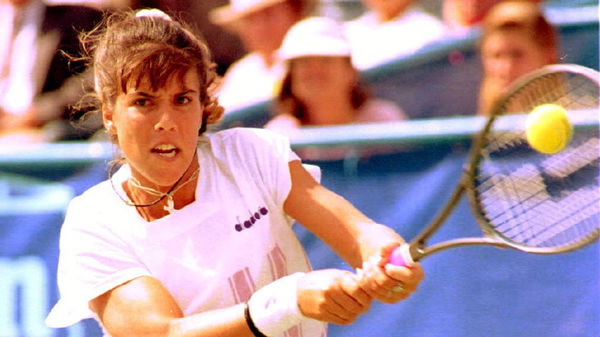

Tennis fans know how controversial coaching during matches has been. Let us backtrack to 2018. Serena Williams was playing against Naomi Osaka at the United States Open women’s final when chair umpire, Carlos Ramos, noticed Williams’s coach, Patrick Mouratoglou, making gestures in the stands. Assuming it was coaching, he assessed a code violation, and this angered the tennis player. Was Mouratoglou guilty of coaching? “I was coaching, but I don’t think she looked at me.” But he also stated that Osaka’s coach “was coaching the whole time, too. Everyone is doing it, 100 percent of the time.”
But Serena Williams still disagreed and later said, “We don’t have signals. We have never discussed signals. I’m trying to figure out why he would say that.” Well, this incident may be in the past, but the rule is still applicable. However, the International Tennis Federation has announced that from January 2025, off-court coaching will be allowed in tennis.
According to the ITF, this move will make tennis “fairer and, potentially, more entertaining.” Under this new rule:
ADVERTISEMENT
Article continues below this ad
- Coaches can give advice verbally or through hand signals at any time except during the playing of a point from an off-court location.
- It should be brief and discreet (except during breaks in play).
- With regards to team events where a captain sits on the court, the captain can coach.
- Athletes can also access ‘player analysis technology’ at times when coaching is permitted.
Whenever there is a change in a rule, we generally see mixed emotions. This recent change in rules is no exception. According to American legend, Jennifer Capriati, “I think players should be able to have a stat pad to see the analytics in real-time. A player should be able to figure this out instinctually, but sometimes what you think you are doing is not what’s actually happening. You need to see the data. Then use that to execute.”
I think players should be able to have a stat pad to see the analytics in real time. A player should be able to figure this out instinctually, but sometimes what you think you are doing is not what’s actually happening. you need to see the data. Then use that to execute
Jennifer Capriati (@JenCapriati) October 22, 2024
But criticizing the new rule, Canadian tennis player Denis Shapovalov tweeted, “Not just as a tennis player but as a fan of this sport it’s sad to see this new off-court coaching rule. Tennis is special because you are out there alone. Why are you trying to change the beauty of this game?“
In response to criticism, ITF’s senior executive director for integrity and legal, Stuart Miller said that they’ve gathered feedback from all key stakeholders, including players, coaches, and the chair umpires.
What’s your perspective on:
Is off-court coaching the end of tennis as a solo battle of wits and skill?
Have an interesting take?
There have been trials of permitted off-court coaching since 2017. In fact, from 2023, the majority of sanctioned tournaments, including the Grand Slam events, were trialing off-court coaching. Previously, players would receive a code violation if they were deemed to be receiving coaching from their coaches sitting in the stands. According to the ITF, this new rule of off-court coaching will ease the burden on chair umpires because previously they would always have to keep an eye on whether players are being coached or not. Will this be effective or will it be a massive failure? Time will tell!
ADVERTISEMENT
Article continues below this ad
On-court coaching is still not allowed!
While off-court will be allowed from next year, on-court coaching will be allowed for teams only, where a team captain sits on-court and the captain may coach at times permitted by the sanctioning body. In all other competitions, on-court coaching is a big no!
However, there are some other things that players and coaches will have to pay attention to as decisions regarding the following details are at the discretion of the sanctioning body of each event:
ADVERTISEMENT
Article continues below this ad
- “Whether coaching is permitted or not in events under its jurisdiction.
- Whether a Chair Umpire must be in place for coaching to be permitted.
- Whether both players must have a coach for coaching to be permitted.
- Who/what is eligible to provide coaching (e.g. whether coaches need to be qualified and/or accredited; whether players can use approved Players Analysis Technology).
- How many people are eligible to coach a player/team.
- Where the coach(es) must be located when coaching.
- Who polices the coaching rules and regulations (e.g. Chair Umpire, off-court official).
- Whether coaching is permitted (and for which player(s) and from which location(s)) during breaks in play that are not covered by the Rules of Tennis, (for example medical time-outs, toilet breaks, change of attire breaks; when play is suspended for weather or light-related reasons; wheelchair repair; spectator medical condition).
- Penalties for coaching in a manner and/or at a time that is not permitted.”
Do you think the decision to allow off-court coaching is a good one? Let us know in the comments below.
ADVERTISEMENT
ADVERTISEMENT
ADVERTISEMENT
ADVERTISEMENT


Is off-court coaching the end of tennis as a solo battle of wits and skill?